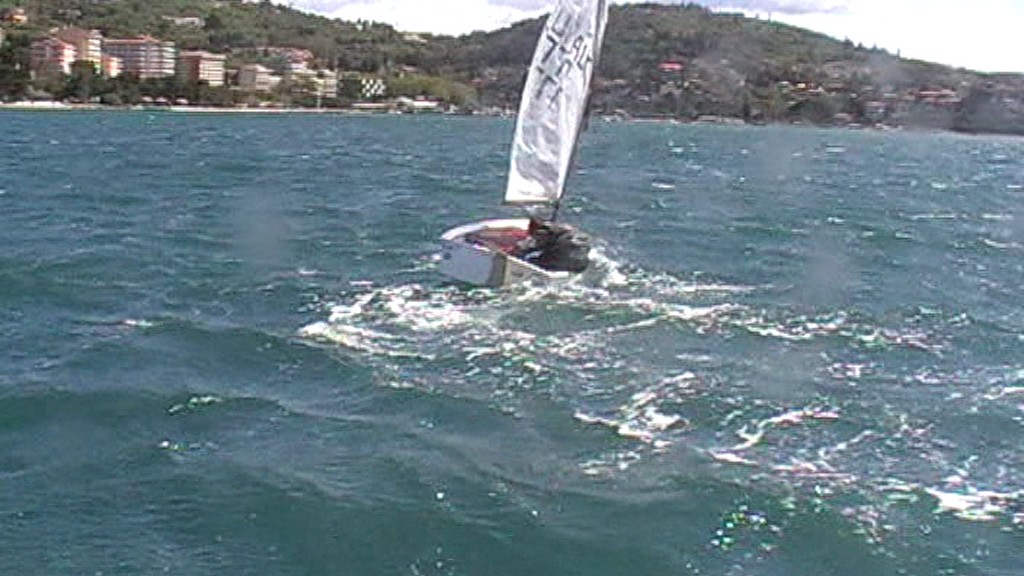The problem of staying into the wind
Hello everyone!
I’m still working on the next article (it’s quite a big project), but to keep you from waiting too long for something new to read, I thought of a topic that often troubles sailors: sailing into the wind unintentionally. This is a common, complex issue that I believe is worth examining closely.
This situation mostly happens to beginner sailors who are still mastering upwind sailing, especially in stronger winds. Facing this challenge is part of the learning curve, so encountering it is practically guaranteed. The real question is how quickly you can learn to handle it effectively.
The Complexity
of Upwind Sailing in Strong Winds
Upwind sailing in strong winds requires executing each movement precisely. This is particularly challenging because our local lakes often have lighter winds, especially in summer. Lighter winds allow for more margin of error, as minor mistakes in control often go unnoticed. However, as the wind picks up, imprecise actions become magnified, exposing any weaknesses in technique. Consider maneuvers like turning, gybing, or even easing down from upwind or a close reach; these actions all demand more precision in strong winds.
What to Pay
Attention to When Sailing Upwind
When sailing upwind in strong winds, several elements require continuous attention:
- Body movement,
- Steering control,
- Mainsheet handling,
- Changes in wind strength,
- Sail trim,
- Maintaining sharp reflexes and focus.
Understanding
Why the Boat Turns into the Wind
The boat turning into the wind is usually the result of multiple factors combined in a sequence of events. Although many sailors understand the mechanics, reflexes often lead them to respond in less-than-ideal ways. Let’s break down the process, which we’ll review with the help of two example videos.
- The sailor is hiking upwind — they could be sitting further out, and the sail could be trimmed flatter.
- Their attention should ideally be forward — watching the water surface to anticipate gusts.
- A gust arrives.
- The sailor can’t quite counterbalance the stronger gust, so the boat heels more; this is natural for beginners still developing weight and experience.
- As the boat heels further, it automatically starts heading into the wind.
- To avoid heading into the wind, the sailor steers to compensate.
- This counter-steering places the rudder at an angle, which acts as a brake.
- The boat naturally wants to point up, but the sailor tries to bear off, resulting in a slowdown and the boat eventually stalling head-to-wind.
- Sometimes, this sequence leads to an “automatic tack,” where the boat ends up on a new tack but with the same problem potentially repeating.
Analyzing the
Video
Here’s a video that illustrates the sequence. Initially, watch it simply to observe what happens.
- First Video: [Link to video]
Now that you have an overview, here’s a step-by-step analysis in a slowed-down video.
- Second Video: [Link to video]
Key points in the video:
- “Watch out, a gust is coming” — You can see it on the water, but the sailor doesn’t anticipate it, so the boat heels more sharply.
- “Ease the sheet” — The gust overloads the sail; instead of counter-steering, the sheet should be eased to release excess power.
- “Too late” — The boat inevitably ends up head-to-wind.
- “Automatic tack” — This often feels like a way out for sailors but can lead to another iteration of the same problem.
- “Ease the sheet again” — After the tack, the problem persists; the sheet must be eased to regain control.
In some cases, the Optimist ends up fully head-to-wind and begins drifting backward. In this situation, the sailor needs to sit in the boat, push the tiller in the opposite direction, and ease the sheet significantly. The boat will start to back downwind to a beam reach position, where it can resume normal upwind sailing. A common mistake here is not easing the sheet enough, so the sail catches wind too soon, and the boat points back up into the wind.
The earliest point to recover from this situation would be Step 6 — instead of counter-steering, easing the sheet would have been the solution. When the gust hits, it overpowers the sail, creating too much force for the beginner sailor to handle. When the wind is too strong, there’s no need to keep all that power in the sail.
Often, inexperienced sailors tend to rely solely on the rudder, thinking it’s the only way to control the boat in such situations. However, both the sheet and the tiller are essential, with one hand controlling each, and both need to be adjusted dynamically.
The best point to start preventing this issue would actually be Step 2. When a gust approaches, the sailor should immediately lean out more or, if they’re already at their maximum, ease the sheet as soon as the boat starts to heel further. Once the gust passes, the sail can be trimmed back in, and upwind sailing can resume.
Summary
The sheet and tiller are there for a reason, and
both should be used, especially in strong winds, to work in balance. By
consistently adjusting both, with one pushing and the other pulling, you
maintain full control in all wind conditions.

